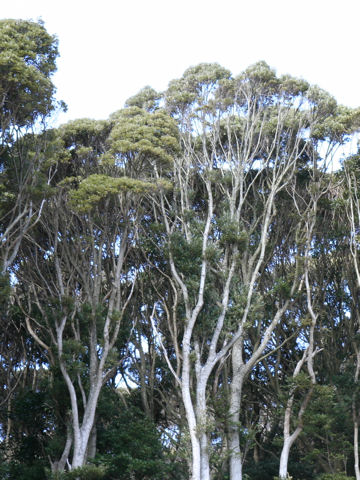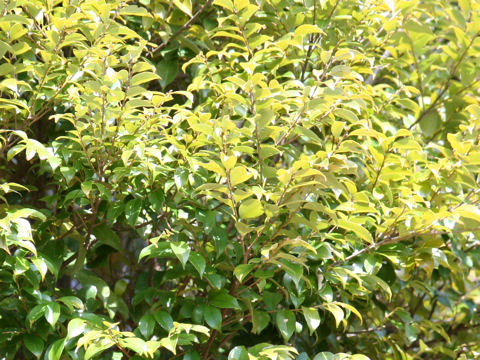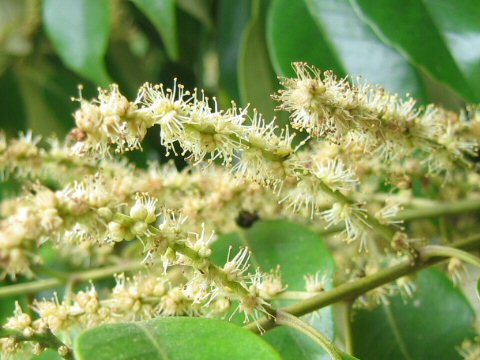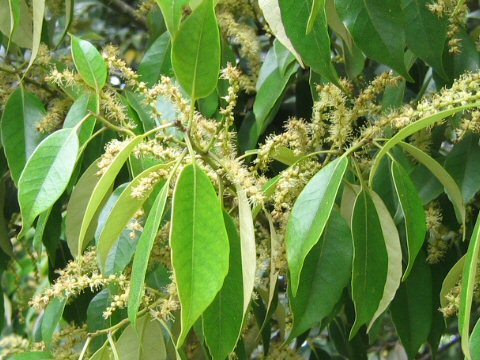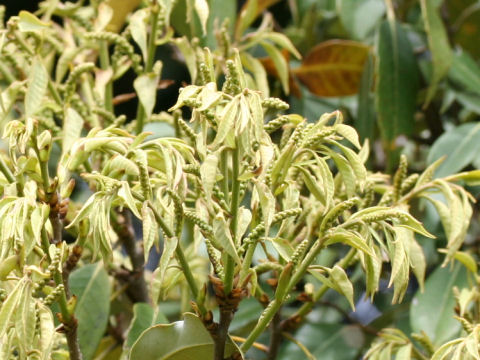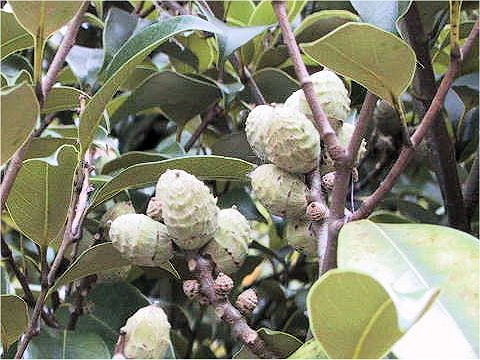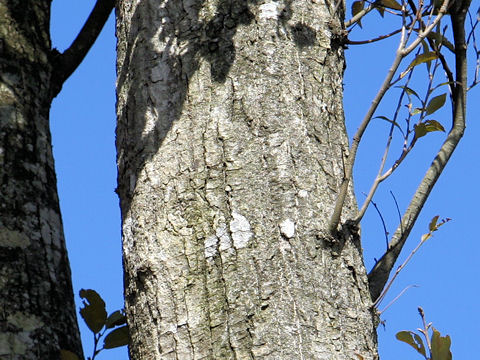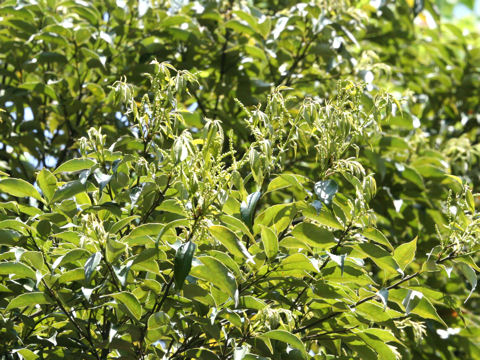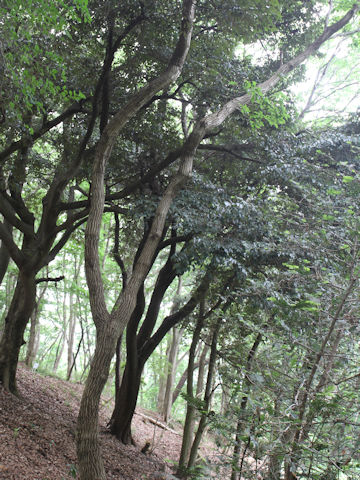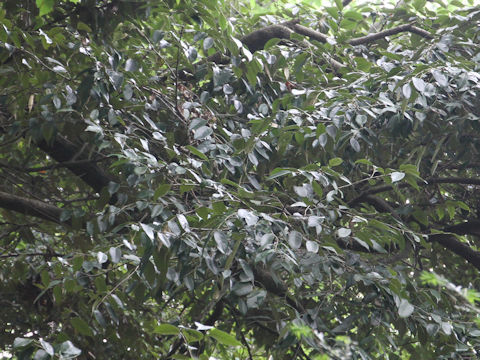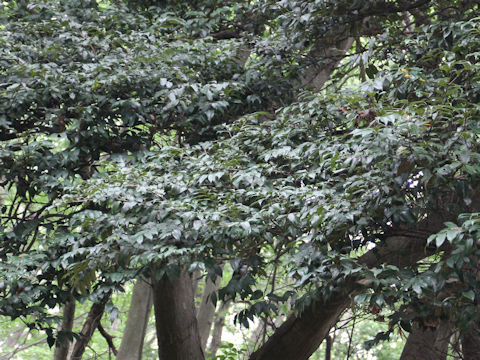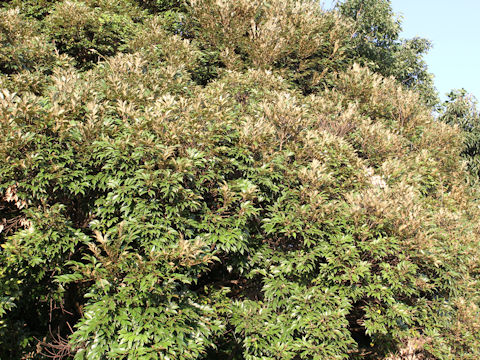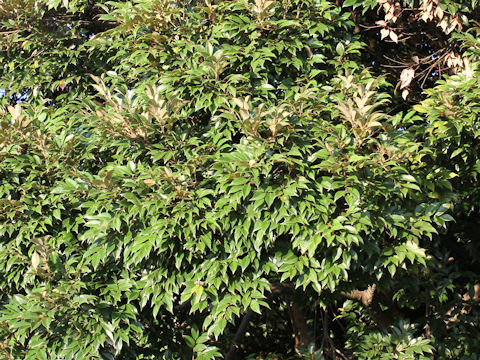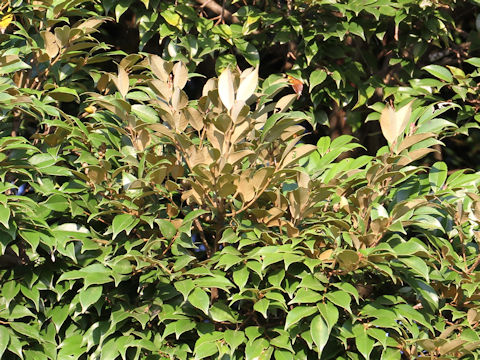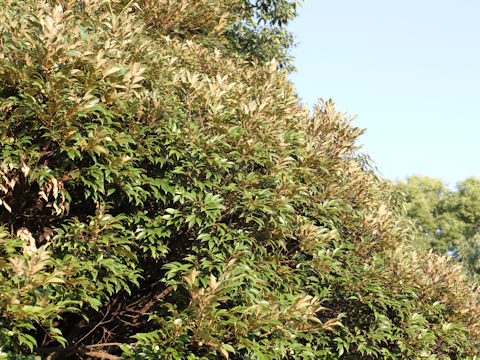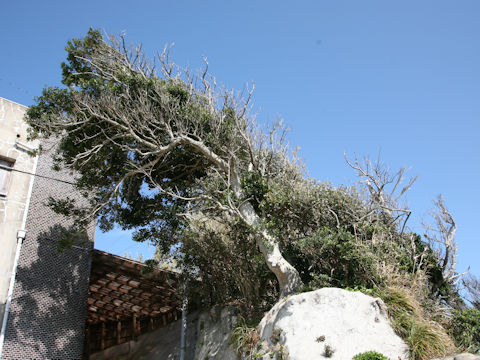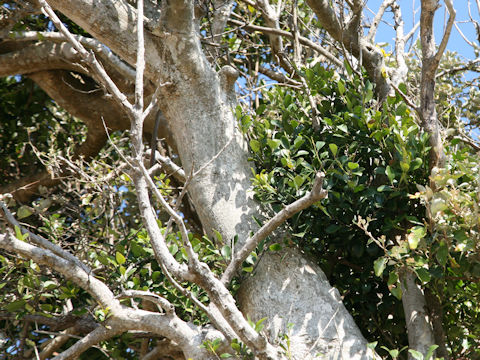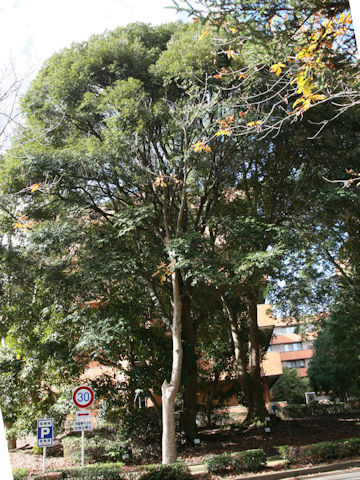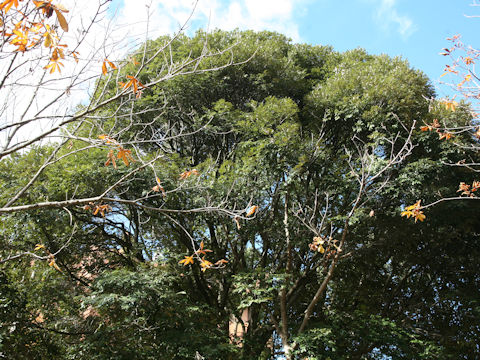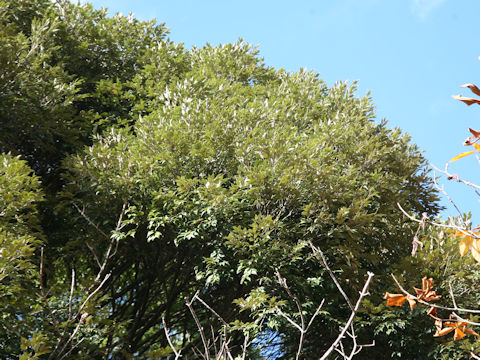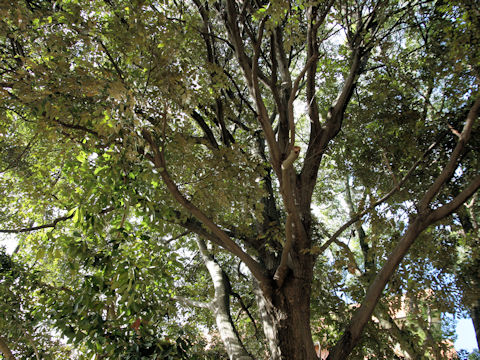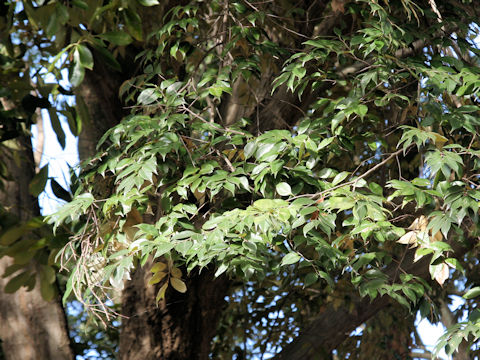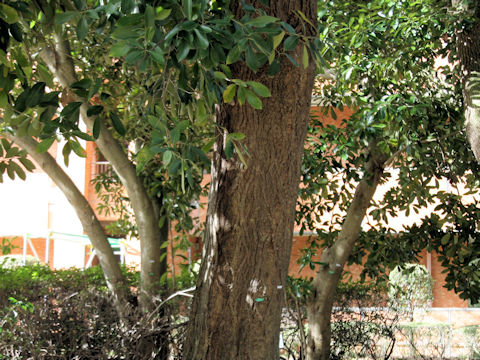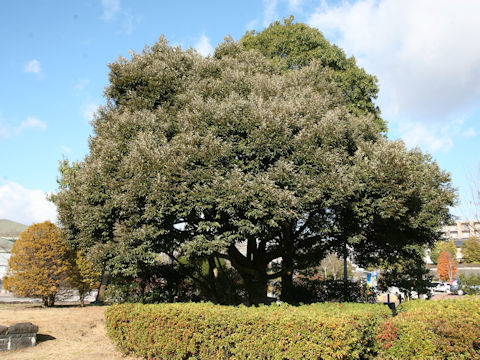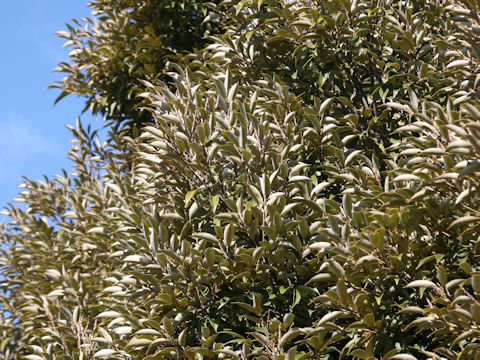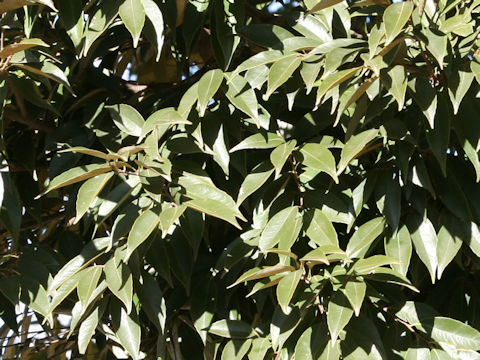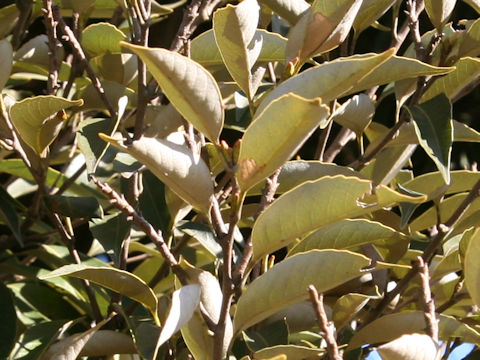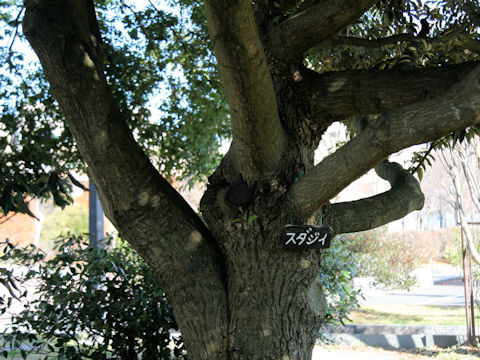
|
|
|
|
−− もっと見る(Show more)−−
−− 閉じる(Close) −−
|
|
|
|
わが国の本州、福島県以西から四国・九州、それに済州島に分布しています。おもに暖地の沿海の山地に生え、高さは30メートルほどになります。広楕円形の葉は互生し、裏は銀褐色(金色)をしています。5月から6月ごろ、穂状花序を上向きにつけます。堅果は円錐状卵形で、総苞につつまれています。10月ごろに熟し、しぶ抜きせずにそのまま炒って食べられます。材は建築材や器具材、椎茸の原木として利用されます。和名の由来ははっきりしていませんが、「素台木」を語源とし、「しいたけ」づくりの基礎となる台木的な木という意味を表わすものとの見解があります。 |
|
|
ブナ科シイ属の常緑高木で、学名は Castanopsis sieboldii。英名はありません。 |
|
|
The "Suda-jii" (Castanopsis sieboldii) belongs to Fagaceae (the Beech family). It is a tall evergreen tree that is distributed from Fukushima prefecture of Honshu west to Shikoku, Kyushu in Japan and Jeju-do (southern Korea). This tree grows in the coastal mountains in warm climate and can reach about 30 m in height. The leaves are broad elliptic, alternate with silvery brown hairs on the reverse sides. The panicles are borne upward in May to June. The fruits are conical-ovate nuts covered with bracts. They ripen in October and edible without removing the astringency. The Timbers are used for architectures, furnitures or dead logs for Shiitake. The origin of the Japanese name is not clear, but there is a view that it is derived from the word "素台木", meaning a rootstock-like tree that serves as the foundation for making "Shiitake mushrooms". |
|
|
[上・中1・中6] 静岡県南伊豆町伊浜「しいの木やま」にて、2007年02月16日撮影。 [中2・中3] 大阪府交野市「大阪市大付属植物園」にて、2004年05月15日撮影。 [中4] 同上にて、2006年05月06日撮影。 [中5] 兵庫県神戸市灘区六甲山町「六甲山牧場」にて、2002年09月08日撮影。 [中7] 群馬県高崎市「高崎市染料植物園」にて、2010年05月16日撮影。 [中8〜中10] 茨城県かすみがうら市「雪入ふるさとの里公園」にて、2016年07月17日撮影。 [中11〜中14] 佐賀県吉野ヶ里町「吉野ヶ里歴史公園」にて、2017年10月07日撮影。 [中15・中16] 三重県志摩市「大王崎」にて、2022年03月19日撮影。 [中17〜中22] 茨城県つくば市「森林総合研究所樹木園」にて、2024年11月29日撮影。 [中23〜26・下] 宮城県仙台市泉区「七北田公園」にて、2024年12月10日撮影。 |

|
|
Shu Suehiro |
